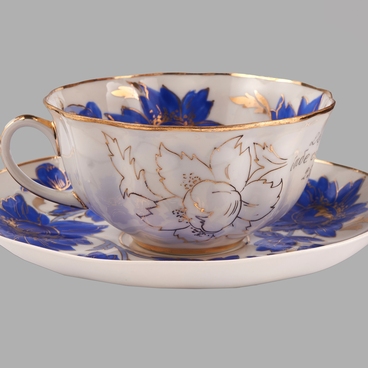A rushnyk is a towel made of homespun canvas, decorated with embroidery and lace, an object of Slavic folk culture and art. The rushnyk was considered sacred and was treated with great respect.
The red and black colors that are prevalent in the embroidery of the towel were chosen on purpose. Red is the color of the sun, warmth, beauty, and blood (life force), and black is a symbol of wealth, black soil, and earth.
The rushnyk was not only an adornment of everyday life, but it also symbolically reminded of the invisible ties that connect each person with their family and ancestors. The number of towels indicated how rich the family was, and the complexity of embroidery displayed the skill and diligence of the hostess. The subjects used in embroidery had deep historical roots and carried a sacred meaning.
In addition to ritual and decorative significance, rushnyks also had a purely practical application. According to the functions they performed, they had different names. An “utiralnyk” was used for wiping the face and hands, dishes and a tabletop. Special towels were woven and embroidered for major annual holidays. For example, on Maslenitsa there was a custom to present a towel — a “blinnik” (from the Russian “blin” meaning “pancake”) — in order to thank the hosts. The Easter rushnyk was intended for baked bread and Easter cakes. A travel rushnyk, usually small, with a modest but carefully designed embroidery, was given to those who left their home: soldiers and merchants. Bread and salt were served on a “bread-and-salt” rushnyk. The wedding rushnyks were most numerous. The most important wedding rushnyk was called “venchalny”.
The towel from the collection of the Novorossiysk Historical Museum-Reserve was made by Ksenia Gerasimovna Savelieva in the Saratov governorate. The intended use of this towel is not known for certain. The fabric is homespun and is of very good quality. This indicates that it was made for a special occasion. The ends of the main canvas are decorated with floral patterns. The pattern is embroidered with red, green and black threads. The symbolism of embroidery makes it possible to assume that this was a wedding rushnyk made by a young girl before the wedding, since from ancient times it was believed that the production of wedding towels was the duty of the bride. The Slavs perceived the rushnyk as a canvas on which the past, present and future were depicted with a red thread. It was believed that while embroidering a wedding rushnyk the bride embroiders her family’s future.
The red and black colors that are prevalent in the embroidery of the towel were chosen on purpose. Red is the color of the sun, warmth, beauty, and blood (life force), and black is a symbol of wealth, black soil, and earth.
The rushnyk was not only an adornment of everyday life, but it also symbolically reminded of the invisible ties that connect each person with their family and ancestors. The number of towels indicated how rich the family was, and the complexity of embroidery displayed the skill and diligence of the hostess. The subjects used in embroidery had deep historical roots and carried a sacred meaning.
In addition to ritual and decorative significance, rushnyks also had a purely practical application. According to the functions they performed, they had different names. An “utiralnyk” was used for wiping the face and hands, dishes and a tabletop. Special towels were woven and embroidered for major annual holidays. For example, on Maslenitsa there was a custom to present a towel — a “blinnik” (from the Russian “blin” meaning “pancake”) — in order to thank the hosts. The Easter rushnyk was intended for baked bread and Easter cakes. A travel rushnyk, usually small, with a modest but carefully designed embroidery, was given to those who left their home: soldiers and merchants. Bread and salt were served on a “bread-and-salt” rushnyk. The wedding rushnyks were most numerous. The most important wedding rushnyk was called “venchalny”.
The towel from the collection of the Novorossiysk Historical Museum-Reserve was made by Ksenia Gerasimovna Savelieva in the Saratov governorate. The intended use of this towel is not known for certain. The fabric is homespun and is of very good quality. This indicates that it was made for a special occasion. The ends of the main canvas are decorated with floral patterns. The pattern is embroidered with red, green and black threads. The symbolism of embroidery makes it possible to assume that this was a wedding rushnyk made by a young girl before the wedding, since from ancient times it was believed that the production of wedding towels was the duty of the bride. The Slavs perceived the rushnyk as a canvas on which the past, present and future were depicted with a red thread. It was believed that while embroidering a wedding rushnyk the bride embroiders her family’s future.


